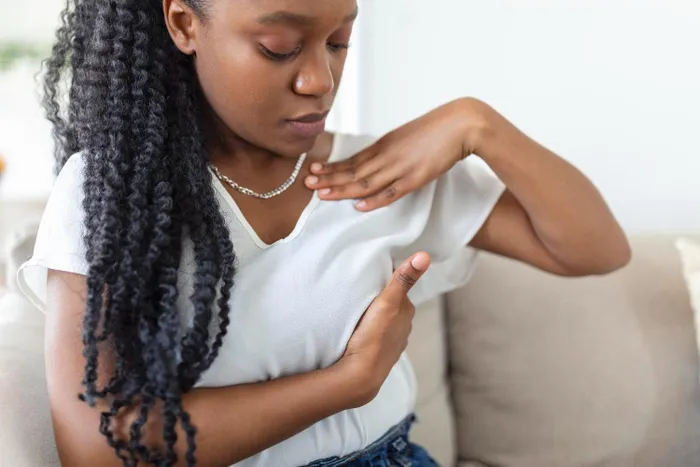Too young is a myth: Your monthly 5-minute guide to breast cancer self-awareness

You're not too young to start examining your breasts.
Image: stefamerpik / Freepik
It’s October, and with Breast Cancer Awareness Month comes the annual display of pink ribbons.
By now, you know the drill: awareness, donations, and a nod to the life-saving importance of early detection.
But if you’re in your 20s or 30s, it’s easy to dismiss the whole thing as something that only applies to your mom or grandmother.
It’s time to smash that misconception right now.
While breast cancer is more common in older women, it does affect young women, and when it does, it's often more aggressive because it's caught later.
You might be too young for routine mammograms, but you are absolutely not too young to be aware.
Your best defence against breast cancer right now isn't a medical machine, it's you.
Bust the myths
The idea that you’re “safe” is a dangerous myth. Let’s get a few things straight from the experts and bust the most common misconceptions:
First, the age myth: It's true that most breast cancers occur later in life, but more young women are being diagnosed, and often with more aggressive cancers. It’s simply not an "older woman's disease."
Next, the family history myth: You might think you're safe because "no one in my family has it." The reality is that most women diagnosed don’t have a family history of the disease. Only a small fraction of cases are linked to inherited genes like BRCA.
And finally, the pain myth: If you believe you’ll know if you have it because you’ll feel pain, think again. Early breast cancer often causes no pain at all, and that’s why screening and self-awareness are crucial.
Knowing your normal
Because standard screening mammograms are typically recommended starting at age 40 for average-risk women, your primary job in your 20s and 30s is self-awareness.
It's about getting to know the unique landscape of your breasts.
Look out for what's lumpy, what's firm, and what changes with your cycle so you can spot an intruder.
Your 5-minute monthly guide to self-awareness
Pick a time each month, maybe a few days after your period ends, when your breasts are less swollen and tender, to check yourself.
Pay attention to these 8 signs:
A cancer lump is usually painless and firm, but breast cancer isn't just a lump. Look for:
- A new lump or thickening in your breast, chest, or armpit (lymph node areas).
- Skin changes like puckering, dimpling, or a rash. Sometimes it can look like an orange peel (thickened, pitted pores).
- Changes in the size or shape of one breast.
- A sudden nipple inversion (the nipple turns inward) or a rash on the nipple.
- Spontaneous nipple discharge that is bloody or clear (and is not breast milk).
- Redness or irritation of the skin (this can be harder to see on darker skin, so feel for texture changes).
- Persistent pain in your breast or armpit that isn't connected to your menstrual cycle.
- Swelling in your armpit or near your collarbone.
Your action plan
Most of the time, a change you find will be benign. This could be a cyst, a normal hormonal variation, or a fibrous change. But you should never self-diagnose.
If you notice anything new or unusual that persists, you need to see your doctor right away.
DO NOT WAIT.
Don't wait until your next annual check-up or your 40th birthday.
If you find a change, you book an appointment now. Early diagnosis offers the best chance for successful treatment.

Don't wait to make an appointment with your doctor.
Image: Anhelina Vasylyk / Pexels
Breast cancer awareness in your 20s and 30s is less about scheduling a mammogram and more about empowerment through familiarity.
This October, make a pact with yourself. Take five minutes a month to check in with your body.
Know what’s normal for you, and if you spot a change, be your own advocate.
You have the power to prioritise your health, and that’s a legacy worth celebrating.
Related Topics: